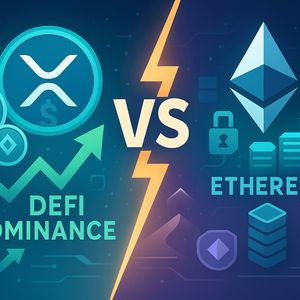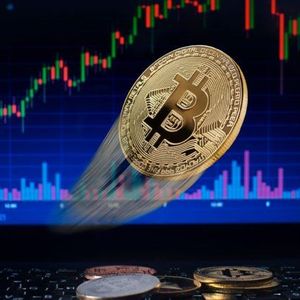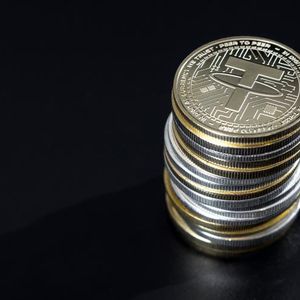BitcoinWorld Ethereum Investors Navigate Uncertainty: Why Caution Lingers Despite ETH Price Recovery The cryptocurrency market is a realm of constant flux, where optimism and caution often dance a delicate tango. Recently, the crypto world has witnessed a welcome surge in the price of Ethereum (ETH), the second-largest cryptocurrency by market capitalization. This ETH price recovery has brought a sigh of relief to many who weathered the preceding downturn. However, a closer look at underlying market indicators reveals a fascinating paradox: despite the upward trend in price, a palpable sense of caution continues to grip Ethereum investors. Why is this the case? What hidden signals are preventing a full embrace of bullish enthusiasm? Let’s delve into the complex layers of market sentiment and on-chain data to uncover the truth. Understanding Ethereum Investor Sentiment : A Deeper Dive At the heart of this cautious stance lies a meticulous analysis of various market metrics, painting a picture that extends beyond mere price charts. One key indicator that has drawn attention is the monthly futures premium for ETH. Cointelegraph’s analysis recently highlighted that this premium has fallen to a bearish 3% level. For those new to the derivatives market, the futures premium reflects the difference between the price of a futures contract and the current spot price of an asset. A low premium, especially one hovering around 3% or lower, suggests that traders are not willing to pay a significant premium for future delivery, indicating a lack of strong bullish conviction and even a potential for bearish expectations. This metric is crucial because it often serves as a barometer for institutional and sophisticated investor sentiment. When the premium is high, it signals strong demand for leveraged long positions, indicating confidence in future price appreciation. Conversely, a low or negative premium points to either weak demand for longs or an inclination towards shorting the asset. The current 3% level is a clear signal that, despite the spot market’s rebound, derivative traders remain hesitant to place significant bets on further upside, preferring to remain on the sidelines or even hedge against potential downturns. Furthermore, this caution is not new. Investors have been noticeably avoiding leveraged long positions since June 12, a period coinciding with ETH’s struggle to maintain the $2,700 price level. This reluctance to take on additional risk through leverage underscores a broader narrative of risk aversion. After experiencing significant volatility and drawdowns in previous market cycles, many investors are now prioritizing capital preservation over aggressive speculation. This shift in risk appetite is a natural response to market uncertainty and speaks volumes about the current state of investor sentiment within the Ethereum ecosystem. Key Takeaways on Investor Caution: Low Futures Premium: A 3% monthly futures premium indicates a lack of strong bullish conviction among derivatives traders. Avoidance of Leveraged Longs: Investors are shying away from high-risk, high-reward positions, suggesting a preference for caution. Risk Aversion: The market’s recent history has instilled a more conservative approach to investing. The Curious Case of ETH Price Recovery and Lingering Bearishness While the spot price of ETH has shown resilience, the underlying reasons for the cautious sentiment are multifaceted. One significant factor contributing to this slow recovery of investment sentiment is the comparison between network fees and the Total Value Locked (TVL) within Ethereum’s decentralized finance (DeFi) ecosystem. TVL represents the total value of assets staked in DeFi protocols, serving as a proxy for the health and adoption of the ecosystem. Historically, high fees on the Ethereum network were a common complaint, yet they also indicated intense demand for block space and network utility. However, if network fees are relatively low compared to a high TVL, it can signal a few things. It might suggest that while assets are locked in protocols, the actual transactional activity generating fees is not as robust as it once was, or that users are migrating to Layer 2 solutions where fees are significantly lower. While lower fees are generally beneficial for users, a sustained period of very low fees relative to the vast amount of value locked could raise questions about the profitability for validators (post-Merge) or the overall economic viability of certain dApps, especially when considering the competitive landscape. This dynamic contributes to the nuanced view of the current ETH price recovery , as investors look beyond mere price appreciation to the underlying economic health of the network. The market’s current state is a testament to the adage that not all recoveries are created equal. A price rebound that isn’t accompanied by strong fundamental signals, such as robust on-chain activity and high demand for network services, can leave investors wary. The memory of previous market corrections is still fresh, making market participants more discerning about the sustainability of any upward movement. This cautious approach is a sign of a maturing market, where investors are increasingly looking at deeper metrics rather than just superficial price action. Why Are Decentralized Applications (dApps) Causing Concern? Another critical element contributing to investor hesitation is the intensifying competition in decentralized applications (dApp) activity. For years, Ethereum reigned supreme as the undisputed king of dApps and DeFi. Its first-mover advantage, robust developer community, and extensive ecosystem made it the go-to blockchain for innovation. However, the landscape has evolved dramatically. New Layer 1 blockchains and Layer 2 scaling solutions have emerged, each vying for a slice of the dApp pie. Chains like Solana, Avalanche, Polygon, Binance Smart Chain, Arbitrum, and Optimism have gained significant traction by offering faster transaction speeds and, crucially, lower gas fees compared to Ethereum’s mainnet. These alternative networks are attracting developers and users alike, leading to a fragmentation of dApp activity. While Ethereum still hosts the largest TVL and a vast number of prominent dApps, the increased competition means that its dominance is no longer unchallenged. Investors are keenly observing whether Ethereum can maintain its competitive edge and continue to attract the next wave of innovation amidst this fierce rivalry. The success of dApps is vital for Ethereum’s long-term value proposition. They drive network usage, generate fees, and attract new users to the ecosystem. If a significant portion of dApp activity shifts to other chains, it could potentially impact Ethereum’s network effects and overall economic model. This competitive pressure forces investors to consider the broader ecosystem health and not just Ethereum in isolation. The narrative is no longer solely about Ethereum’s growth but also its ability to defend its market share against agile and innovative competitors. The Evolving dApp Landscape: Increased Competition: New L1s and L2s offer faster, cheaper alternatives to Ethereum. Market Fragmentation: dApp activity is spreading across multiple blockchains. Impact on Ethereum: Potential challenges to network effects and long-term value proposition if market share erodes significantly. Navigating the Broader Crypto Market Analysis Beyond Ethereum-specific metrics, the overall sentiment in the broader crypto market analysis plays a significant role. The crypto market, as a whole, has endured a challenging period marked by macroeconomic uncertainties, regulatory scrutiny, and high-profile industry events. These factors have collectively contributed to a more risk-off environment across all asset classes, including digital assets. Investors are not just looking at individual coin performance but also at the macro picture, including inflation rates, interest rate hikes, and geopolitical tensions. This broader market caution naturally spills over into specific assets like Ethereum. Even if Ethereum’s fundamentals appear strong, a bearish macro environment can dampen enthusiasm and prevent significant capital inflows. The memory of past market crashes, often triggered by external economic factors, makes investors particularly sensitive to global financial indicators. Therefore, while Ethereum’s internal metrics are crucial, its fate is also inextricably linked to the ebb and flow of the global economy and the wider crypto market’s perception of risk. However, it’s not all doom and gloom. The options market skew, which measures the difference in implied volatility between call and put options, currently stands at a neutral 2% level. This neutrality is a fascinating counterpoint to the bearish futures premium. While the futures market indicates a lack of aggressive long bets, the options market suggests that traders are not overwhelmingly betting on a downside either. A neutral skew means that the demand for protection against price drops (puts) is roughly balanced with the demand for participation in price rallies (calls). This balance indicates that while caution prevails, there is also an underlying expectation or hope for a bullish turn, preventing a complete capitulation of positive sentiment. This neutrality in the options market could be interpreted as a ‘wait-and-see’ approach. Investors are not rushing to open aggressive positions in either direction, suggesting that they are keenly observing further developments before committing. This balanced outlook provides a glimmer of hope that a catalyst, whether it be a significant network upgrade, a positive macroeconomic shift, or a surge in dApp adoption, could tip the scales towards a more pronounced bullish sentiment. What’s Next for Ethereum ? Actionable Insights Given the mixed signals, what does this mean for investors and enthusiasts of Ethereum ? The current environment presents both challenges and opportunities. The challenges include the persistent competition from other blockchains, the need to demonstrate sustained on-chain activity beyond just TVL, and the broader macroeconomic headwinds. However, Ethereum also possesses inherent strengths that cannot be overlooked. Its robust network effect, the largest developer community in the crypto space, and ongoing scalability improvements (like the continued development of Layer 2 solutions and future EIPs) position it well for long-term growth. The successful completion of The Merge, transitioning to Proof-of-Stake, was a monumental achievement that significantly reduced its energy consumption and set the stage for further upgrades focusing on scalability and efficiency. Actionable Insights for Investors: Look Beyond Price: Focus on fundamental metrics like network usage, developer activity, and fee generation relative to TVL. Monitor Competition: Keep an eye on the growth and innovation happening on alternative L1s and L2s. Understand Derivatives: Pay attention to futures premiums and options skew as indicators of sophisticated investor sentiment. Long-Term Perspective: For those bullish on Ethereum’s technology and ecosystem, periods of caution can present opportunities for strategic accumulation. Diversify: Consider a balanced portfolio that accounts for the inherent volatility and evolving competitive landscape of the crypto market. The current situation is a testament to the growing maturity of the crypto market. Investors are no longer simply chasing hype but are increasingly engaging in sophisticated crypto market analysis , scrutinizing on-chain data, derivatives markets, and competitive landscapes. This level of diligence is crucial for navigating the inherent volatility and identifying sustainable growth opportunities. Conclusion: A Cautious Optimism for Ethereum’s Future The paradox of a rising ETH price coupled with lingering investor caution highlights the complex dynamics at play in the cryptocurrency market. While the ETH price recovery is a positive sign, the bearish futures premium, the slow recovery of investment sentiment due to low fees relative to TVL, and intensifying competition from other decentralized applications are valid concerns that keep investors on edge. The neutrality in the options market, however, suggests that outright bearishness is not the dominant sentiment, leaving room for a potential bullish turn if underlying conditions improve. Ultimately, Ethereum’s journey is one of continuous evolution and adaptation. Its ability to innovate, scale, and maintain its competitive edge against a backdrop of increasing competition will dictate its long-term trajectory. For investors, understanding these nuanced signals is key to making informed decisions in a market that continues to surprise and challenge even the most seasoned participants. The current caution isn’t a sign of weakness, but rather a reflection of a discerning market, patiently awaiting stronger fundamental signals to fully embrace the next phase of growth for Ethereum. To learn more about the latest crypto market trends, explore our article on key developments shaping Ethereum price action. This post Ethereum Investors Navigate Uncertainty: Why Caution Lingers Despite ETH Price Recovery first appeared on BitcoinWorld and is written by Editorial Team



















